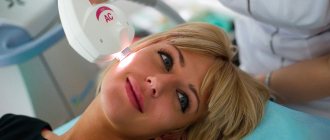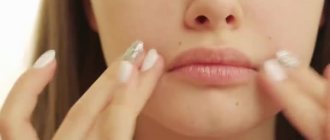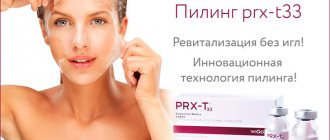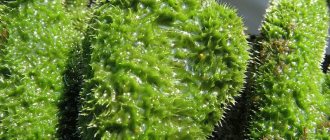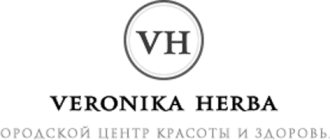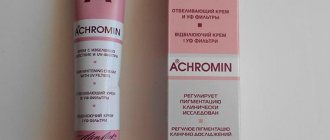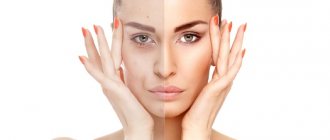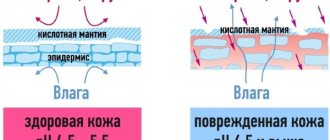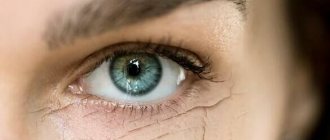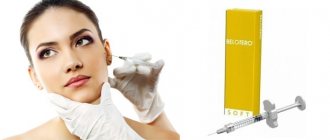Today, the main task of pharmaceutical and cosmetology laboratories is the development and synthesis of the most significant and effective substances that can be used to create effective products to solve current problems. One of these substances that is actively, but still cautiously, used for the preparation of a wide variety of pharmaceutical and cosmetology products is arbutin. At the moment, the substance is surrounded by close attention, since experiments, tests and quality tests are just being carried out, the results of which are not yet fully known.
Beneficial properties of arbutin
Arbutin is a natural component that is obtained by performing a series of chemical reactions with plants (bearberry, lingonberry, mulberry or bergenia).
The structure of the molecule is a glycoside, an ether. This component is actively used in products intended to lighten the skin, as the safest and most gentle product. Arbutin is non-carcinogenic and non-toxic. The component has a lot of useful properties, including:
- reduction of melanin synthesis for problems with skin hyperpigmentation;
- when exposed to an alkaline environment, arbutin has an astringent and antiseptic effect, transforming into hydroquinone;
- soothes and softens mucous membranes;
- eliminates fluid retention in the body.
Considering the properties and effect of the substance on the body, it is not surprising that plants containing it are used to treat diseases of the digestive and excretory systems.
Use of the substance in cosmetics
Arbutin is used in cosmetics as a substitute for pure hydroquinone due to the fact that it does not contain toxic components. Its main purpose is to reduce skin pigmentation. The mechanism of operation of the component is as follows: it penetrates the body and partially suppresses the production of the enzyme that is responsible for the synthesis of melanin. Thus, the level of production of the latter decreases, and age spots, freckles, and other changes in skin color are noticeably lightened.
There are subtleties in using this component in creams, since if the dose is exceeded, it can provoke the opposite effect - stimulate hyperpigmentation. Accurate data on the beneficial dosage have not yet been obtained, so arbutin is added in small quantities (usually from 2 to 4% of the total components), which means that its effect is not pronounced, but the presence of results cannot be denied. Often in skin care products it can be found in combination with various plant extracts, hyaluronic acid and vitamin C. The substance can also be effectively used in hair dyes, which is currently permitted.
In addition to the whitening effect, arbutin is also able to protect the skin from harmful ultraviolet radiation, increase the level of local immunity, have an anti-inflammatory effect and reduce the intensity of pain. Creams that are produced with this component are usually applied twice a day - morning and evening.
Also in cosmetics you can find a derivative of this substance - alpha-arbutin, which has more active properties and is widely used mainly in Japanese cosmetic products.
Interesting information about arbutin
Some researchers are inclined to believe that arbutin contributes to the occurrence of skin cancer. In response, other observations by scientists confirmed that 80% of the drug after application does not accumulate in tissues, but is excreted in the urine. The remaining substance is so small that it is not capable of causing cancer.
An interesting fact: arbutin in small concentrations has a positive effect on the urinary system, protecting it from the pathogenic effects of microorganisms. The controversial issue regarding the negative impact of the substance has persuaded responsible cosmetic and pharmaceutical companies to add it to the bulk of raw materials in a concentration of no more than 4%. In this ratio, arbutin does not pose a health threat.
What is it used for in medicine?
In medical circles, research is constantly being conducted to find the safest components for humans for the manufacture of medicines. Studies are also being conducted regarding the effect of arbutin and the advisability of its use. The most common purpose of using this component is to achieve a diuretic effect. The advantage of the substance is that, unlike other diuretics, it has a list of additional beneficial effects, namely anti-inflammatory, antimicrobial and antioxidant properties.
Retinol in your cosmetics: anti-wrinkle cream
Despite all the cosmetic innovations, something remains an unshakable standard in anti-aging cosmetics. For example, vitamin A derivatives are retinoids. Decades of clinical studies have proven that they significantly reduce the depth of wrinkles. Retinoids are used in the treatment of keratosis, seborrhea, acne, psoriasis, various melanomas and UV aging of the skin.
Retinol is a familiar word
Retinol, or vitamin A,
most popular among anti-aging cosmetics connoisseurs. But besides it, there are many more effective components in the family of retinoids (both natural and synthetically synthesized). The harmless vitamin has spawned an entire army of anti-aging creams using retinaldehyde (Retinal), retinoic acid (Retinoic acid/Tretinoin), as well as its esters (Retinyl palmitate/acetate).
Why do they love retinoids so much?
For an incomparable effect in the fight against wrinkles. It has been proven that retinoids stimulate fibroblasts, increasing the synthesis of collagen and elastin, thereby significantly reducing the depth of wrinkles.
How do they do it?
When applied topically, that is, when applying a cream, retinoids partially penetrate into the dermal (deep, living) layer. But before they start working, they undergo a number of changes.
Retinyl palmitate/acetate > retinol > retinaldehyde/retinal > trans-retinoic acid/tretinoin
- these are the initial transformations that occur after application to the skin.
The closer to the end of the chain, the greater the activity of the substance, and vice versa. So if you see Retinyl palmitate listed, know that it will only work to prevent wrinkles, not reduce them.
But active forms of retinoids (Tretinoin/Isotretinoin) are quite capable of significantly reducing wrinkles. When using such drugs, the epidermis thickens, and the stratum corneum, on the contrary, becomes thinner - this is called epidermal hyperplasia.
The main biological function of retinoids
- control the development and division of epithelial cells, stimulating the creation of new blood vessels and collagen production. And also - inhibition of carcinogenesis (reducing the likelihood of skin cancer), control of pigmentation (skin becomes lighter, post-acne disappears) and antioxidant function (since retinoids contain double bonds, they can act as a trap for free radicals).
Retinol
— is the most common form of vitamin A. Most often found in cosmetic (non-medicinal) preparations. It has a cumulative effect, that is, the longer you use it, the fewer wrinkles remain. Retinol is much weaker in action than tretinoin, but it is cheaper and has lower irritant potential. This is important if you use this product every day and all year round.
Retinyl palmitate
- This form of vitamin A is both the most stable and the least active. To release active retinol from retinyl palmitate, the skin needs to use too many mechanisms. Therefore, it is used mainly as a preventive measure against aging.
Retinyl acetate
- another popular retinol ester. Also shows low activity in creams. It is an antioxidant and is usually at the bottom of the list on the label.
Retinoic acid (Tretinoin)
- vitamin A in the form of an acid, a rare guest in cosmetics - more often “lives” in pharmaceutical preparations. This form is used by our body at the cellular level. It reduces wrinkles well, but at the same time has a strong irritating potential.
Isotretinoin
- synthetic retinoid.
An even more active form - it immediately penetrates the cell nucleus, so the effect is instantaneous and terrifying, the potential for irritation is very high, and this also results in a teratogenic effect (disturbance of embryonic development). Be careful, pregnant women!
Choosing an effective remedy
It should be taken into account that the skin does not completely absorb the cream, and not all retinoids will ultimately become “working” retinoic acid.
When determining the actual dosage,
you can use the one-tenth principle, that is, about 0.1 of substances such as retinol or retinyl acetate will become retinoic acid (and maybe less). In addition, studies show that 1% retinol will have about the same effect on the epidermis as 0.1% retinoic acid - this is quite enough even for treating acne. It is acceptable to use any form of vitamin A at a concentration of no more than 1–2%. At higher dosages there is a risk of allergic reactions.
Irritation potential.
Different concentrations of active forms of retinoids (retinol, retinal, tretinoin, isotretinoin) differ in effect. The higher the dose, the stronger the effect and... the more pronounced the side effects. Most often in expensive cosmetics you will find retinol in the middle of the list of ingredients, that is, in a concentration even lower than the classic “working” 1%. The nuance is that retinol even at a concentration of 0.5% can cause redness, peeling and irritation of the skin, so there’s definitely no need to go for the high end.
By the way, if the cream uses retinol encapsulation technology (inside liposomes, nanosomes, etc.), the indicated concentration may be even lower - 0.5% encapsulated retinol can work more actively than 2% “free”.
Packaging and price matter.
Be sure to look at the packaging: the most effective products should be in vacuum dispensers, protected from exposure to light - the active forms of vitamin A are very unstable. Cosmetics with a “working” content of biologically active retinoids cannot be cheap, since the technological process and raw materials require certain conditions that are not always available to the average manufacturer.
Additional measures.
Since the stratum corneum does become thinner under the influence of the cream, it needs additional protection. Be sure to purchase a good moisturizer with antioxidants and panthenol and always use sunscreen, even if you work in the office or at home.
Vitamin A is a proven assistant in the fight against enemy number one - wrinkles. And most importantly, he continues to improve. In general, we can talk endlessly about retinoids, and I will definitely touch on additional aspects in my next articles.
Tatiana Morrison
Photo thinkstockphotos.com
Products by topic: [product](retinol), [product](vitamin A), [product](face cream)
Harm and contraindications for use
The main contraindication to the use of drugs with arbutin is the presence of individual intolerance, the possibility of which exists for all components of plant origin, and too dark skin. According to research, when using the component on too dark skin, there is a high probability of a reverse reaction of the formation of black pigmentation.
Despite the fact that contraindications to the use of products with arbutin are minimal, the substance still leaves a number of questions regarding its safety, since it is still a type of hydroquinone.
Direct harm from the use of products with such a component can only occur if the dose is significantly exceeded. It is believed that the component, under certain conditions, can even provoke the appearance of malignant tumors.
Health Hazards and Problems
Many people are concerned about the safety of using arbutin-containing creams due to its close relationship with hydroquinone . The glucose molecule that makes arbutin and hydroquinone different is, however, important in terms of reducing health risks.
According to the German Federal Institute for Risk Assessment, arbutin can actually be converted to hydroquinone, a chemical that is well known for its health risks and has been banned in the European Union.
But at the moment there is no evidence of this yet, and research is only yet to come.
Currently, arbutin is considered safe for skin whitening as long as it is used as directed - no more than 2-4% arbutin in the cream.
Review of cosmetics with arbutin
Today, there is a large variety of creams, serums, lotions and other cosmetics that contain arbutin. Moreover, depending on the amount of the substance in the preparation, one can judge not only its quality and effectiveness, but also its safety, since exceeding the standards for the inclusion of arbutin in a cosmetic product leads to negative consequences. For this reason, below is a list of the highest quality, natural, effective and safe products that can be found on the domestic market and purchased at any pharmacy in the country.
Roland Face cream with arbutin and placenta
The described cream is a high-quality product used for the care of facial skin of all types. The main active ingredients contained in the cream are arbutin and placenta extract. The product is sold in a small pink jar with a volume of 180 grams. It should be noted that the composition of the cream is quickly and completely absorbed into the skin without leaving an unpleasant greasy layer or a filmy feeling on the face. The Japanese manufacturer claims that the product contains all the necessary properties of milk, cream, and lotion, providing effective and gentle skin care. At the same time, the cosmetic product is rich in polyunsaturated fatty acids, vitamins and other substances necessary for the dermis.
Hana Lightening Lotion for Pigment Spots
This product is an effective moisturizing and brightening cream-lotion made in Japan. The product is made based on arbutin and hyaluronic acid and is sold in a small bottle with a capacity of 10 milliliters. At the same time, the product is enough for a long period of use when applying the composition to the skin of the face twice a day. The cosmetic product has a wide range of actions, allowing you not only to even out skin tone, but also to effectively saturate the skin with all the necessary vitamins and microcomponents. The complex of cosmetic elements is optimal for daily use, regardless of skin condition and type.
Anti-Melasma Serum
The cosmetic drug Anti-Melasma is a serum used for the care and correction of problematic and sensitive facial skin. The drug is great for both women and men who want to get rid of inflammatory processes on the face. One of the most important elements contained in the serum is arbutin, due to which the skin color evens out and becomes more uniform after just a few uses of the composition. The product has a light texture and is well absorbed into the skin, leaving no traces or unpleasant sensations.
Himalaya Herbals Whitening Cream
The described cosmetic product is a whitening cream that can be used for all skin types, regardless of age. A special feature of the product is that it contains only natural ingredients and extracts, including rose oil, walnut oil, mandarin oil, aloe oil, etc. The consistency of the product is light, non-greasy, easily absorbed into the skin, and has no unpleasant odor. The product effectively brightens the skin, evening out its color, without having a negative effect on the body.
What is arbutin
Arbutin is a natural component, the source of which is herbs and berries, so it does not cause allergies. It can be obtained synthetically from various plants. It combines well with other lightening agents (niacinamide, kojic and ascorbic acid), enhancing their effect. The main sources of arbutin are mulberry and bearberry; it is found in lower concentrations in cranberries, lingonberries, blueberries, pears and wheat.
The component is used in the cosmetics industry in several forms:
- Alpha arbutin. This is the most effective form, purified, suitable for any skin type. It has a strong inhibitory effect. Disadvantage: expensive production. Alpha arbutin in this form serves as a hallmark of the quality of the drug.
- Beta arbutin. This is an unstable version of the substance, weaker. It is included in inexpensive drugs. Included in almost all care products in Korean cosmetics intended for whitening skin and age spots.
- Deoxy arbutin. This is an artificial form of arbutin, with powerful antioxidant effects. It is 150 times more effective than kojic acid, and 10 times more effective than hydroquinone. This is a stable, harmless form that is quickly absorbed and does not irritate the skin.
More often, the composition of the preparations includes a plant form. It is rarely found in a synthetic version.
